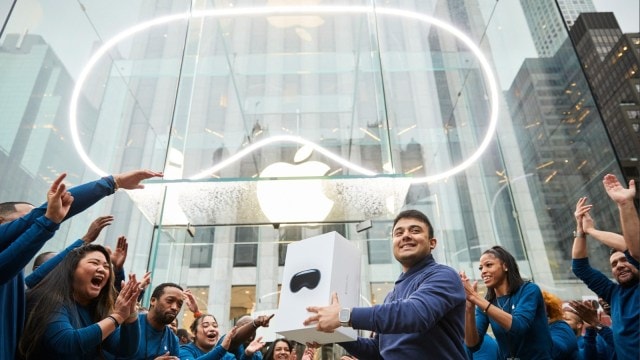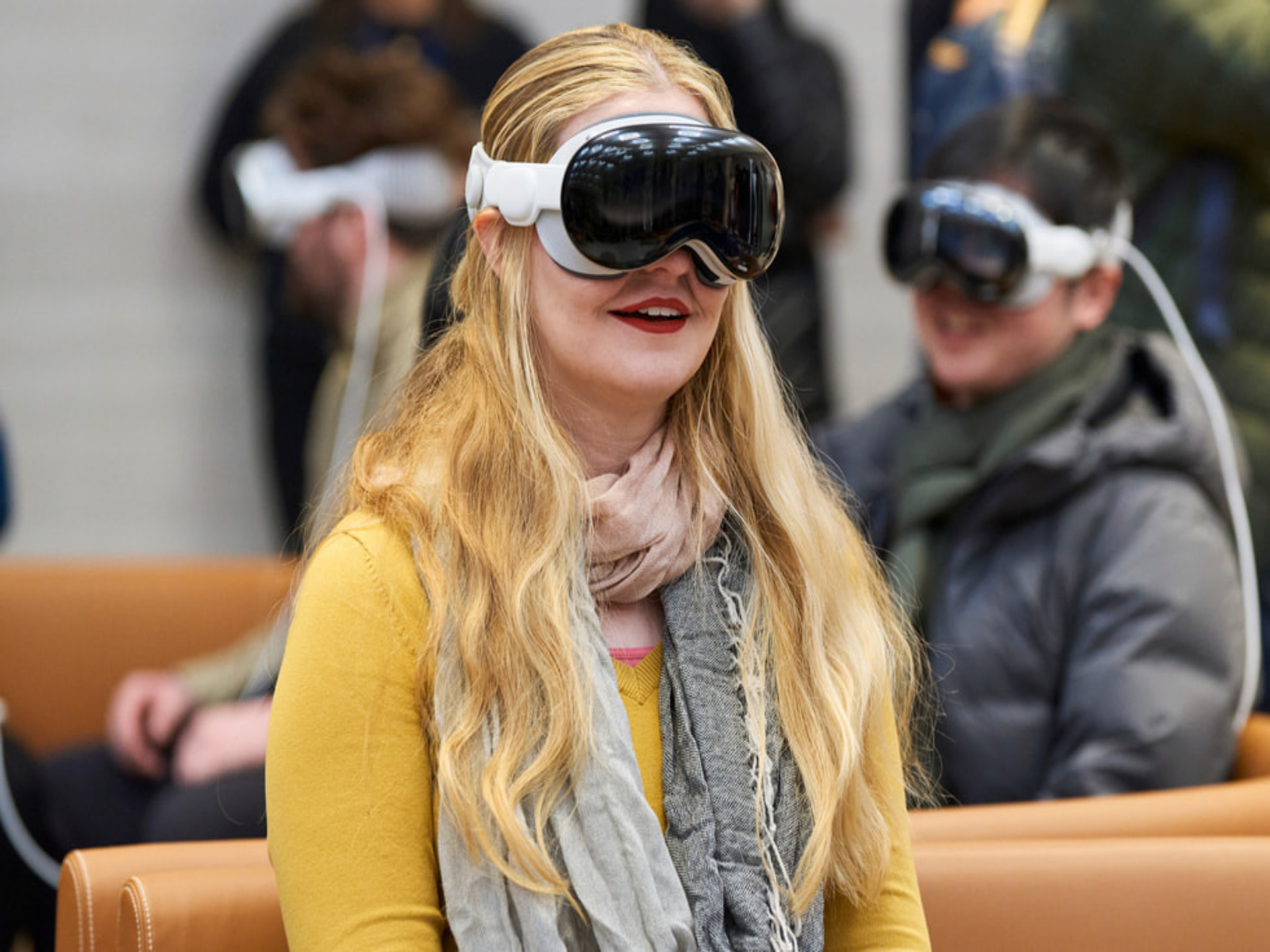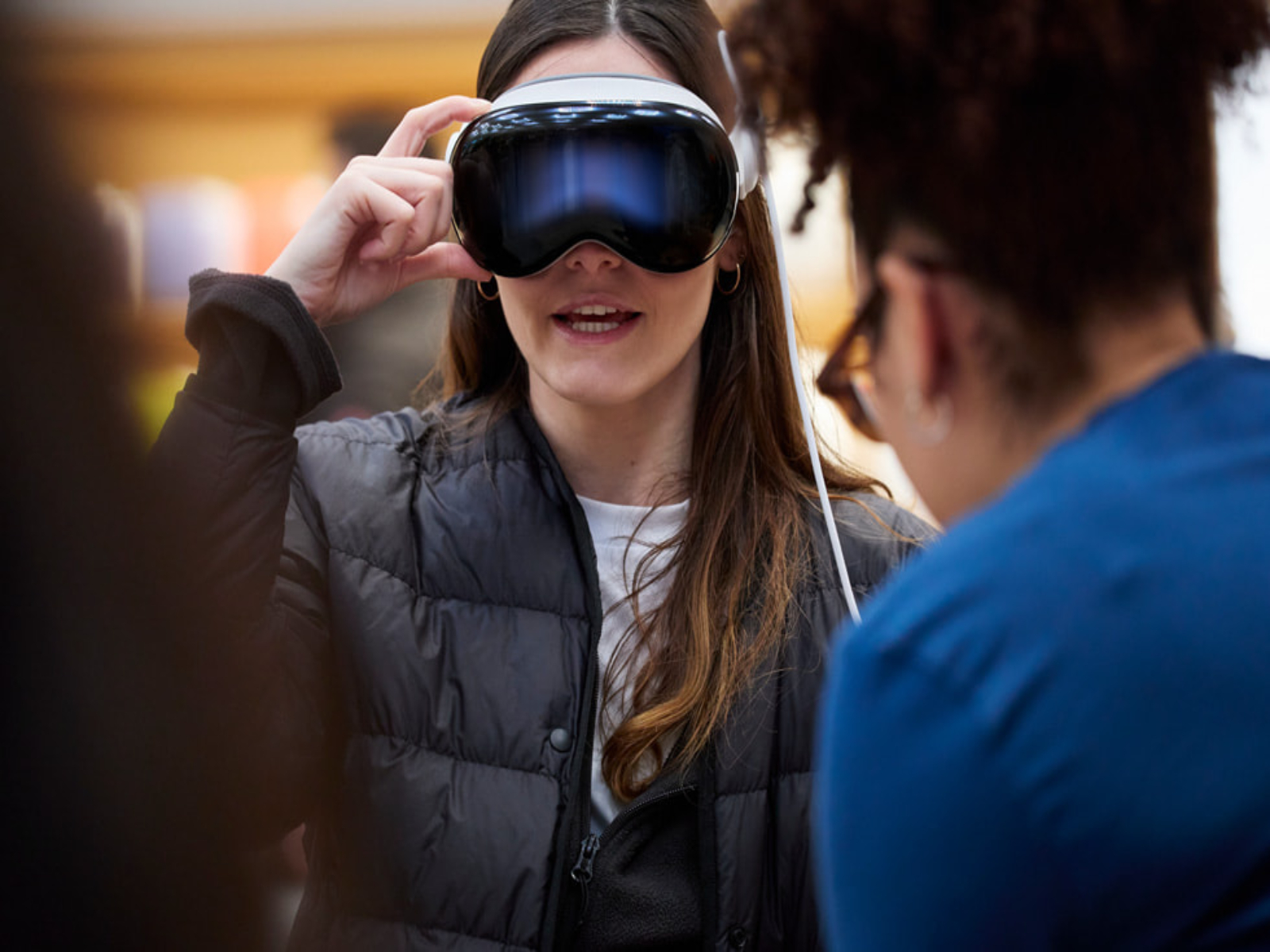Apple Vision Pro: 5 things we have learned so far about the $3500 AR/VR headset
Priced at $3,500, the Vision Pro headset from Apple is positioned as a statement piece rather than a mass-market device.

Apple’s Vision Pro, which functions as both a Mac and a TV, has recently been released for sale. The initial consumer response, including feedback from those who tested the product but did not make a purchase, will be crucial for Apple to improve future versions and implement updates. The novelty of the Vision Pro has led to some uncertainty, but it also presents new opportunities for content consumption. As the world speculates about the purpose of Apple’s Vision Pro, here are five immediate observations from the initial rollout phase of the headset.
Developer support seems robust.
A few days before the retail release of the Vision Pro, there were concerns about Apple’s ability to attract developer support for its mixed-reality headset. Some speculated that there would be fewer than 200 native Vision Pro apps, suggesting a lackluster response from developers. However, Apple later announced that the number of native Vision Pro apps exceeded 600, in addition to over a million iOS and iPadOS apps. While popular apps like Netflix and YouTube may not be available, there is still an extensive list of compatible apps across entertainment and productivity categories. Notable names include Adobe Firefly and Lightroom, Microsoft 365 office apps, and Zoom, among others.
Furthermore, the list is expected to grow as many developers have announced their apps on the day of the launch, with plans for release in the near future. This means that the number of apps and games designed specifically for the spatial computing environment will continue to increase as Apple expands the availability of Vision Pro to other markets. For comparison, Meta’s Quest 3, a $500 mixed-reality headset, is compatible with 500 apps and games.
The significance lies not in Apple surpassing Meta by 100 more native apps, but in the fact that Apple managed to launch with over 600 native apps and games for a completely new platform. It is important to note that Meta has more experience in selling headsets and is an established player in the immersive market space. Therefore, having 500 compatible apps for Quest 3, marketed as a mainstream headset, may no longer seem as impressive.
Apple has launched impressive new high-tech goggles, but it raises a fundamental question: what is the need for a face computer? (Image credit: Anuj Bhatia/Indian Express)
Don’t be vVisionpPro(hole)
When reviewing Apple’s marketing material for the Vision Pro, it appears to promote using the headset for futuristic 3D FaceTime calls as well as for entertainment and productivity purposes. These are practical uses for the Vision Pro that can be explored and tested. However, there is a concerning aspect to consider. Since the headset has become available for purchase, there have been instances of users wearing it while engaging in activities such as driving, which has resulted in traffic stops by law enforcement. Additionally, there are viral videos showing individuals wearing the headset while navigating public spaces, raising privacy and safety issues similar to those experienced with the now-defunct Google Glass. This presents a potential challenge for Apple to address, despite its preferences.
CEO Tim Cook has been promoting the Vision Pro as a new era of “spatial computing,” but it also presents challenges that revive the debate about the social acceptance of face computers. Apple’s marketing materials do not depict the headset being used outdoors, despite its impressive real-time passthrough video capabilities.
However, simply including a warning on Apple’s website about the use of the headset may not be enough to change public perception. The issue is not solely Apple’s responsibility; the concept of face computers presents practical questions and complexities that are raised by a headset like the Vision Pro. The Vision Pro is equipped with multiple cameras and offers fully immersive virtual reality as well as augmented reality. While it transforms the world into a large screen, it prompts questions about its implications. It seems that Apple does not have a clear answer to these questions.
Apple presents the Vision Pro as the start of a new era of “spatial computing,” in which digital data seamlessly integrates with the physical world. (Image credit: Apple)
Watching a movie can be a lonely experience.
Whether admitted or not, the Vision Pro is a TV that only Apple can deliver. It’s not a traditional TV, but one that embodies the concepts of immersive content and new formats. Early users of the Vision Pro report that 3D movies look just as impressive as they do in the theater. Apple is positioning the headset as an entertainment device, with a strong emphasis on transforming the Vision Pro into a large-scale TV.
However, there’s a drawback. While the Vision Pro may offer an incredible way to watch TV that can’t be replicated with existing TVs, the truth is that nobody knows what you’re viewing on the screen. This deviates from the shared experience of consuming movies on a big screen, whether at home or in a theater. If this is the future of TV consumption that Apple envisions, it appears to be a solitary one. Perhaps Apple never intended for the Vision Pro to be this way. Although the headset allows users to enter the “real world,” the reality is that Cupertino is also promoting a device that is extremely “personal” yet “isolating.”

The Vision Pro is essentially a TV. (Image credit: Apple)
It’s heavy
The Vision Pro headset is packed with impressive technology, including two 4K micro-OLED screens, a great passthrough video feed with minimal latency, and an impressive hand-eye control interface. However, despite the cool demo videos, some users found the headset to be a little heavy on the face after extended use. The headset weighs between 21.2 and 22.9 ounces (or 600–650 grams), similar to the size of the 12.9-inch iPad Pro.
Apple confirmed the weight issue, stating that there was no way to make it lighter. In a Vanity Fair interview, Richard Howarth, Apple’s vice president of industrial design, addressed the weight concern. “There was no way to make it lighter or smaller. The device contains a significant amount of aluminum, glass, and components, essentially making it a heavy-duty computer attached to your face. The challenge with face computers is how to reduce their weight and size. While wearing the headset for the first few minutes may impress people, they soon become fatigued by the experience of wearing a computer on their face. This remains an unanswered question.”

Apple unveiled the headset last year, marking its first significant new product release since the introduction of the Apple Watch in 2015. (Image credit: Apple)
Battery life
The immediate issue is how to integrate face computers with smartphones and laptops in areas where they excel. For example, Vision Pro’s battery life is not comparable to that of a smartphone. The headset comes with a separate battery pack, which not only looks bulky and a little unusual but also lasts only up to 2.5 hours. Apple may argue that they chose this approach to minimize weight on the head, but the reality is that the battery pack, roughly the size and weight of an iPhone (approximately 353 grams), is a compromise. This also means that, despite being technically as capable as a Mac, the Vision Pro’s battery life limitation restricts its usage. While it is possible to purchase an additional battery pack to extend usage and battery life, this workaround costs an extra $199 on top of the $3500 for the Vision Pro.
conclusion
In conclusion, while the Vision Pro offers impressive capabilities and a unique design, its limited battery life and the need for an additional battery pack may deter some potential buyers. The added cost of the workaround also makes it less accessible for those on a budget. However, for those who value performance and aesthetics over cost considerations, the Vision Pro’s impressive capabilities and distinctive design make it a worthwhile investment, which justifies the limited battery life and additional cost of a battery pack.
 Data Science in Digital Marketing Data Science in Digital Marketing: Mechanism Examples, Benefits Data Science Meets Digital Marketing Magic
Data Science in Digital Marketing Data Science in Digital Marketing: Mechanism Examples, Benefits Data Science Meets Digital Marketing Magic





